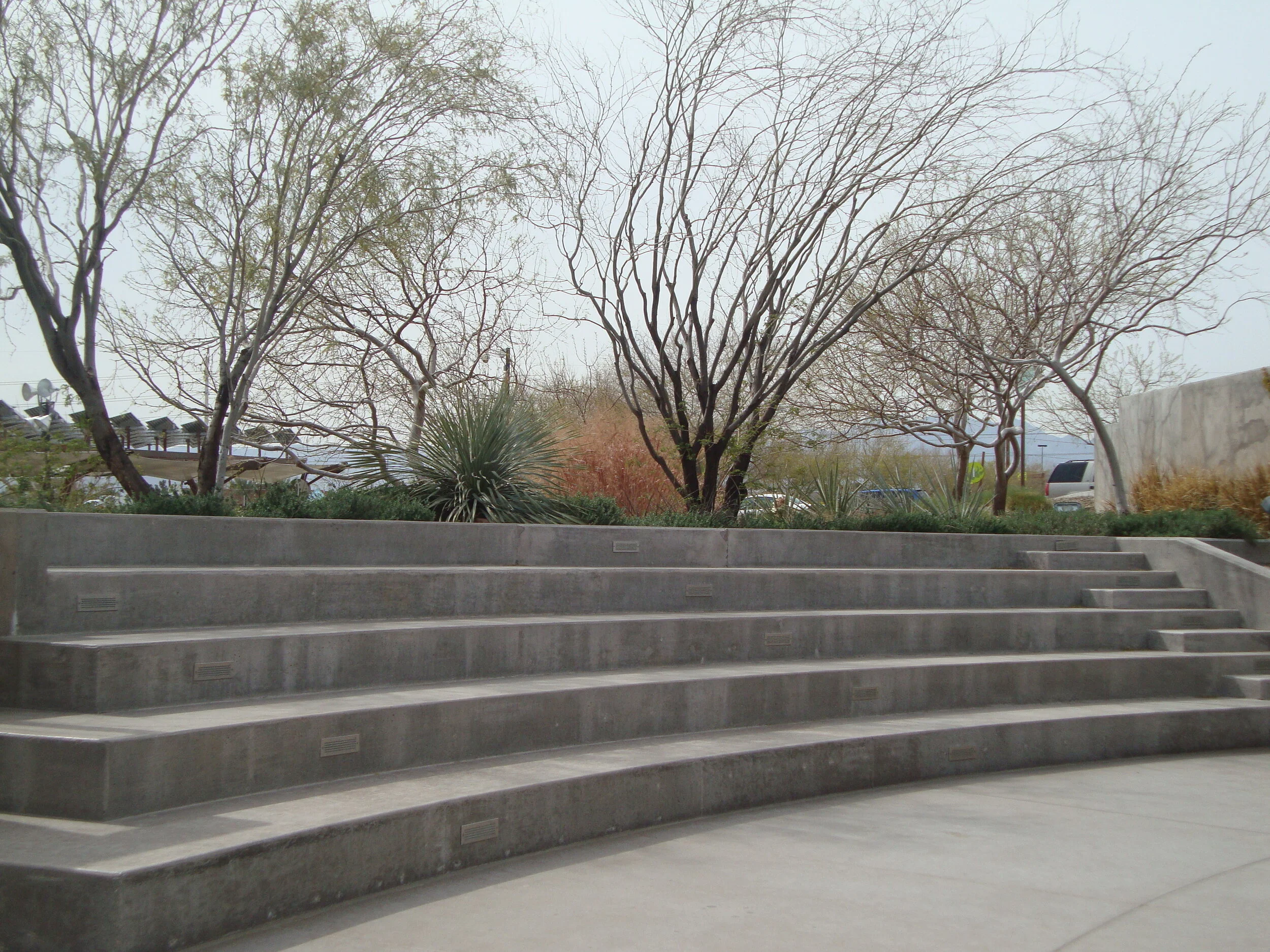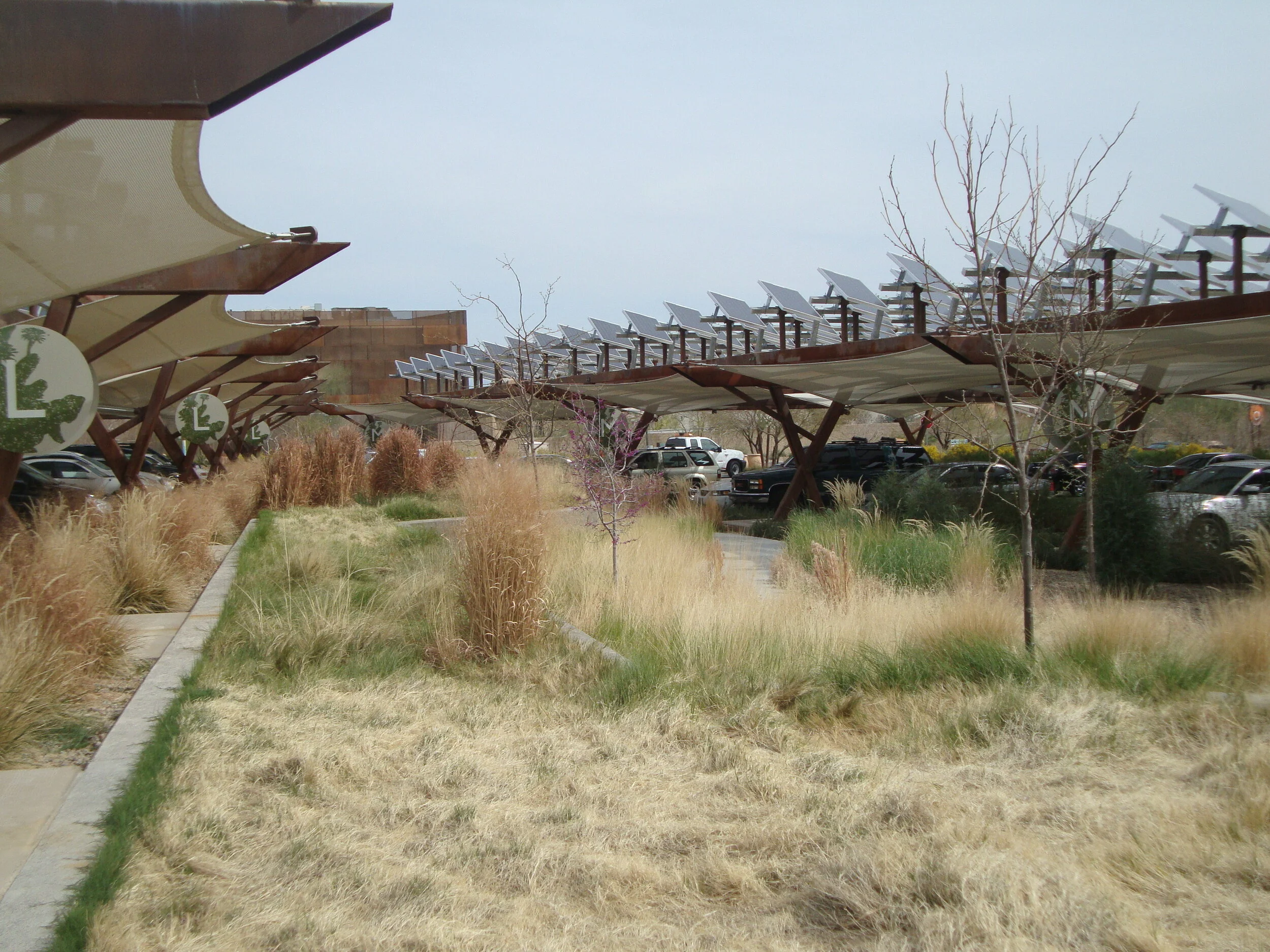Las Vegas Springs Preserve
Initially planned as a large parking lot and pump station, DPA, Inc seized the opportunity to explore multiple educational and conservation opportunities. Located across the street from an abnormally green shopping center, our project transitions to native desert habitat. Knowing the fierce contrast between the two, DPA, Inc. developed a sculptural planting theme. Parking lot features were softened with multiple levels, cliché outcroppings and sculptural tree like shade structures for the unpalatable top of the reservoir. Additionally we included a designed biofilter to treat and reuse storm water runoff. Meandering beads of blue glass originating at view portal project to significant historical sties, as the Mormon trail, sunrise mountain and lake mead – then draw visitors to the orientation plaza.
Long before the invention of pavement, storm drains or holding basins, nature itself managed to have adverse effects of seasonal monsoons. In the desert, native plants and sandy soils absorbed rain and run-off, then filtered out contaminates to create fresh supplies of clean groundwater. Like the sandy soil of the desert, gravel filters out sediments and creates air pockets that encourage the growth of roots and friendly soil microbes. These tiny organisms break down and devour organic pollutants, especially hydrocarbons like the oil and grease that collect in parking lots. Just as desert streams move mostly underground, popping up occasionally to create springs and wetlands, the water cleansed by this biofilter continues underground through a storm drain and then resurfaces to support a nearby cienega.
DPA, Inc. enhanced the master plan to give visitors a hands on view of the day today workings of a pump station. You enter the building following he same course as the water, through a 13+-foot diameter water pipe with a gate valve door. Guests are pumped up an elevator adjacent to a 3-story manhole, exiting into the tank view plaza. Down a small low ceiling corridor visitors can see into the actual 20 million gallon water reservoir. From here they travel back into the building to an overlook with etched glass interpretative signs mounted onto a hoist that drop into and out of view. Picking up a lab coat and punch card guests move into a control room with real time data to view and work with. Form here you enter a testing lab to experiment with water properties. Visitors also will have a hands on view of cut a way valves in the docent led tour.













